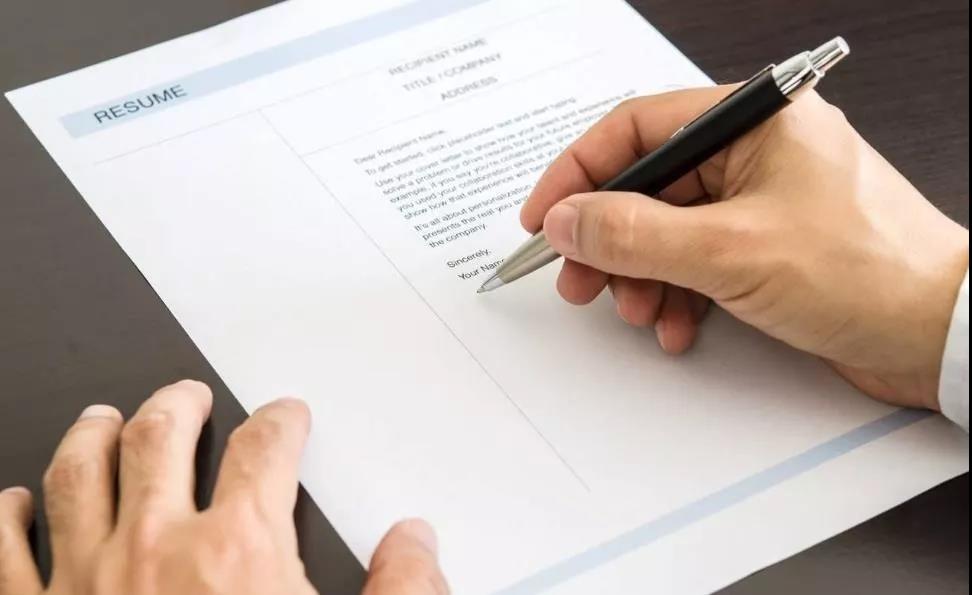高一的英语语法第1篇表示现在(说话瞬间)正在进行或发生的动作。[例句]Heisreadinganewspaper表示当前一段时间内的活动或现阶段正在进行的动作(说话时动作不一定正在进行)。[例句]Wh下面是小编为大家整理的高一英语语法12篇,供大家参考。

高一的英语语法 第1篇
表示现在 (说话瞬间)正在进行或发生的动作。
[例句] He is reading a newspaper
表示当前一段时间内的活动或现阶段正在进行的动作 (说话时动作不一定正在进行)。
[例句] What are you doing these days?
表示说话人现在对主语的行为表示赞叹或厌恶等,常与always, constantly, continually等副词连用。
[例句] He is always thinking of
表示在最近按计划或安排要进行的动作。常限于go, come, leave, start, arrive等表“移动”、“方向”的词。
[例句] He is coming to see me next
高一的英语语法 第2篇
表示在过去某一时刻以前已经开始并一直延续到这一时刻、或是在此刻前已经完成的动作。
[例句] By the end of last term, we had learned 1,000 English
有些动词 (如:
hope, think, expect, mean, intend, suppose, want等)的过去完成时可表示过去未曾实现的希望、打算或意图。
[例句] I had hoped to see more of
◆动词时态应注意的几点
瞬间性动词的一般现在时和现在进行时常用来表示将来的动作。例句:
①The film begins in a
②My uncle is leaving tomorrow
在时间、条件、让步状语从句中,常用一般现在时代替一般将来时。例句:
①Every time I listen to that song, I’ll think of my old
②If you do that, I shall be very
③They’ll stand by you even if you don’t
一般过去时和现在完成时的区别:一般过去时和现在完成时都表示过去所发生的动作,但现在完成时强调这一动作与现在的关系,如对现在产生的影响、结果等,所以它不能和表示过去的时间状语连用;一般过去时只表示过去的事实,不表示和现在的关系,因而它可以和表示过去的时间状语连用。如:
—Have you finished your work?
—Yes, I
—When did you finish it?
—I finished it last
高一的英语语法 第3篇
having done
having done是非谓语动词中-ing形式的完成式,而doing则是其一般式,它们都与句中主语构成逻辑上的主谓关系,只是doing与句中谓语动词同时发生或基本上同时发生;having done则表示动作或状态发生在句中谓语动词之前。
[例句]
①Hearing the news, they got (hear和get excited这两个动作几乎同时发生)
②Having arrived at the top of mountain, they took a (arrive发生在take a rest之前)
动词后接动词的-ing形式和不定式有些动词后既可接动词的-ing形式也可接to do形式作宾语,但意义有所不同。
[例如]
① forget / remember / regret doing 表示动作已经发生;
forget / remember / regret to do 则表示该动作未发生。
② mean to do 表示“打算做某事”;
mean doing 表示“意味着做某事”。
③ try to do 表示“设法尽力做某事”;
try doing 表示“试着做某事”。
④ stop to do 表示“停下来接着做另一件事”;
stop doing 表示“停止做某事”。
⑤ go on to do 表示“(做完某事)接着做另一件事”;
go on doing 表示“继续做同一件事”(= go on with )。
⑥ can’t help to do 表示“不能帮助做某事”;
can’t help doing 表示“情不自禁地做某事”。
have/has been doing
have / has been doing是现在完成进行时的构成,强调动作的延续过程,动作可能还在进行。而have / has done是现在完成时的构成,强调动作的结果,该动作通常已经结束。
[例句]
①I have written a (动作结束)
②I have been writing a (可能未写完,侧重最近一直忙于写书)
高一的英语重要时态语法掌握了吗?
高一的英语语法 第4篇
单元写作话题:旅行
假设你是刘明,寒假期间准备去北京旅游。请你根据下面的提示,用英语给你的网友李红写一封邮件。主要内容如下:
你以前从未去过北京,请他当向导,带你参观长城,颐和园和其它名胜;
想住在他家里,以便聊聊彼此的生活和学习;
问候他的父母。
注意:
词数 100左右;开头结尾已给出,不计入总词数
颐和园 the Summer Palace
【参考范文】
Dear Li Hong,
I haven’t heard from you for quite a long How have you been these days?
During the coming winter vacation, I’m going to Beijing for a As I have never been to Beijing before, I’d like you to be my I hope you can show me around the Great Wall, the Summer Palace and some other places of What’s more, during my visit I hope to stay together with you in your house so that we can have a good talk about our life and What do you think of my idea? I would like to know your
Please give my best regards(问候) to your
Yours sincerely,
Liu Ming
单元写作话题:环境保护
假设你叫李华,你从报纸上得知世界上8种熊中有6种面临灭绝的危险,人类活动是造成熊类濒危的主要原因。你决定给世界野生生物基金会(WWF)写信反映这一情况、提出你的建议,并希望基金会采取行动对熊类予以保护。参考词汇:熊类bear species
【参考范文】
Dear Sir or Madam,
I’ve learned from a newspaper that six of eight bear species in the world are dying Scientists say that humans are their biggest threat because some parts of bears are very expensive as That’s one of the reasons why bears are often In addition, many habitats of bears are being destroyed as a result of human activities, so bears are losing their
To save bears, I think more reserves for bears should be set up so that they can live freely Laws should be passed to prevent people from killing Please give a hand to the endangered They need help to
Yours sincerely,
Li Hua
高一的英语语法 第5篇
动词时态应注意的几点
瞬间性动词的一般现在时和现在进行时常用来表示将来的动作。例句:
①The film begins in a
②My uncle is leaving tomorrow
在时间、条件、让步状语从句中,常用一般现在时代替一般将来时。例句:
①Every time I listen to that song, I’ll think of my old
②If you do that, I shall be very
③They’ll stand by you even if you don’t
一般过去时和现在完成时的区别:一般过去时和现在完成时都表示过去所发生的动作,但现在完成时强调这一动作与现在的关系,如对现在产生的影响、结果等,所以它不能和表示过去的时间状语连用;一般过去时只表示过去的事实,不表示和现在的关系,因而它可以和表示过去的时间状语连用。如:
—Have you finished your work?
—Yes, I
—When did you finish it?
—I finished it last
2直接引语与间接引语转换时应注意的几个问题
人称的变化
时态的变化
时间状语的变化
地点状语的变化
例句:
①Xiao Yi said, “I want to go to the park this ”
→Xiao Yi said (that) he wanted to go to the park that
②Bob said, “We’ll have a meeting here tomorrow ”
→Bob said (that) they would have a meeting there the next
3定语从句中关系代词只能用that和不能用that的几种情况
只能用that的情况
先行词是不定代词。
例句:Please tell me everything that happened to
先行词被形容词最高级、序数词或only, last, same, very等修饰。
例句:
①This is the most interesting movie that I have ever
②This is the only book that I read during the summer
先行词既包括人又包括物。例句:She talked about the writer and his works that interested
不能用that的情况
非限制性定语从句中。
例句:He said he could speak three foreign languages, which is not
先行词本身是that。
例句:I have that which you gave
“介词+关系代词”结构。
例句:The person to whom I talked just now is
4现在完成进行时与现在完成时进行的比较
强调动作还未结束时,多用现在完成进行时;强调动作的结果时,多用现在完成时。例句:
①I have been painting the (强调“一直在画”这个动作)
②I have painted the (强调“画完了”这个结果)
有些动词不能用在现在完成进行时中,但可用在现在完成时中。如:have, love, see等。例句:
①She has had a cold for a
②They have loved each other for three
③I have seen this
-ing形式:
having done
having done是非谓语动词中-ing形式的完成式,而doing则是其一般式,它们都与句中主语构成逻辑上的主谓关系,只是doing与句中谓语动词同时发生或基本上同时发生;having done则表示动作或状态发生在句中谓语动词之前。
[例句]
①Hearing the news, they got (hear和get excited这两个动作几乎同时发生)
②Having arrived at the top of mountain, they took a (arrive发生在take a rest之前)
动词后接动词的-ing形式和不定式有些动词后既可接动词的-ing形式也可接to do形式作宾语,但意义有所不同。
[例如]
① forget / remember / regret doing 表示动作已经发生;
forget / remember / regret to do 则表示该动作未发生。
② mean to do 表示“打算做某事”;
mean doing 表示“意味着做某事”。
③ try to do 表示“设法尽力做某事”;
try doing 表示“试着做某事”。
④ stop to do 表示“停下来接着做另一件事”;
stop doing 表示“停止做某事”。
⑤ go on to do 表示“(做完某事)接着做另一件事”;
go on doing 表示“继续做同一件事”(= go on with )。
⑥ can’t help to do 表示“不能帮助做某事”;
can’t help doing 表示“情不自禁地做某事”。
have/has been doing
have / has been doing是现在完成进行时的构成,强调动作的延续过程,动作可能还在进行。而have / has done是现在完成时的构成,强调动作的结果,该动作通常已经结束。
[例句]
①I have written a (动作结束)
②I have been writing a (可能未写完,侧重最近一直忙于写书)
高一的英语语法 第6篇
一般将来时
1、will/shalldo
(1)表示将来会出现的动作或状态。常用的时间状语:thisevening,tomorrow,nextweek/month…,attheendofthisterm,inafewminutes等。
(2)表示将来经常发生的动作。
(3)表示事物的固有属性或必然趋势、倾向。
(4)表示说话过程中做出某种决定。
注意:条件状语从句中的will表示“决心,意愿”,此时will是情态动词表示意愿。
2、begoingtodo
(1)表示已经决定或安排要做的事。
(2)表示根据某种迹象认为在最近或将来将要发生的事。
3、betodo
(1)表示约定、计划或按职责、义务要求即将发生的动作。
(2)表示说话人的意志、意图、职责、义务、命令。
(3)表示注定要发生的事情。
4、beabouttodo
(1)表示即将发生的动作,意为“正要,即将”。
(2)不可与表示具体的将来时间的副词或副词性短语连用,但可以同由as或when引导的时间状语从句连用。
5、某些动词的现在进行时表示即将发生的动作。
高一的英语语法 第7篇
人称的变化
时态的变化
时间状语的变化
地点状语的变化
例句:
①Xiao Yi said, “I want to go to the park this ”
→Xiao Yi said (that) he wanted to go to the park that
②Bob said, “We’ll have a meeting here tomorrow ”
→Bob said (that) they would have a meeting there the next
◆定语从句中关系代词只能用that和不能用that的几种情况:
高一的英语语法 第8篇
01as句型
as引导方式状语从句句型:“按照……;正如……”
例:As(it is)in your country, we grow wheat in the north and rice in the
正如(像)你们国家一样,我们北方种植小麦,南方种植水稻。
as+形容词/副词原级+(a /an)+名词+as ;
否定式:not as/so --- as
例:He is as good a player as his
他和他姐姐一样是位优秀的运动员。
such + + as to do 如此……以致于……
例:She is such a fool as to believe what he
她是这样一个笨蛋以致于相信了他所说的话。
so + + as to do 如此……以致于……
例:He was so strong as to carry the heavy
他是如此的强壮以致于能提起那重箱子。
像……之类的……(接名词或定语从句)
例:He wished to be such a man as Lei Feng
他希望成为一个像雷锋这样的人。
the same +名词+as 和……一样的……(接名词或定语从句)
例:He is not the same man as he used to
他不是从前的那样子了。
as 引导非限制性定语从句
例:As is known to us, knowledge is
众所周知,知识就是力量。
引导时间状语从句,与while意义相近
例:We get wiser as we get
随着我们长大,我们也变得越来越聪明。
引导原因状语从句,与 because的用法相近
例:As it was getting very late, we soon turned
因为越来越迟了,所以我们不久就回来了。
引导让步状语从句
例:Child as he is, he knows much about
尽管他是一个小孩,但他对科学了解得很多。
02prefer句型
prefer to do
例:I prefer to stay at
我宁愿呆在家里。
prefer doing
例:I prefer playing in
我喜欢打防守。
prefer to do
例:Would you prefer me to stay?
你愿意我留下来吗?
prefer to do rather than do …
宁愿…而不愿
例句:I prefer to stay at home rather than go
我宁愿呆在家里而不愿出去.
prefer doing to doing
例:I prefer watching football to playing
我喜欢看篮球,不喜欢打篮球。
prefer to
例:I prefer tea to
我要茶不要咖啡。
03when句型
be doing
例:He was still smiling when the door opened and his wife came
他正笑着的时候门突然开了,他妻子走了进来。
be about to do when
例:We were about to start when it began to
我们刚要出发,天就开始下雨了。
had just done when
例:I had just gone to bed after a very hard day when the phone
在劳累了一天之后我刚刚就寝,电话铃就响了。
04seem句型
It + seems + that 从句
例:It seemed that everyone was
看来好像每个人都很满意。
It seems to sb that
例:It seems to me that she is
我看她是对的,
There seems to be
例:There seems to be a heavy
看上去要有一场大雨。
It seems as if
例:It seemed that she couldn"t come to
看样子她不能来上课了。
05表示“相差;增加”句型
She is taller than I by three
她比我高三英寸。
There is one year between
我们之间相差一岁。
She is three years old than
她比我大三岁。
They have increased the price by 50%.
他们把价格上涨了50%。
His salary has rised to 10,000 yuan per
他的工资已经涨到了每月10,000元。
06what引导的名词性从句
what 引导主语从句
例:What surprised me is that everybody seemed to be very indifferent to
让我吃惊的是每个人似乎对她都很冷淡。
[ indifferent 不关心的;冷漠的 ]
what 引导宾语从句
例:We can learn what we do not
我们能学会我们不懂的东西。
what 引导表语从句
例:That is what I
那正是我所要的。
what 引导同位语从句
例:I have no idea what they are talking
我不知道他们正在谈论什么。
07too句型
too to do
例:Politics is too important to be left to the (=Politics is so important that it can"t be left to the )
政治太重要了,不能由政治家来决定。
only too to do
例:I shall be only too pleased to get
我要回到家里就非常高兴。
too + + for
例:These shoes are much too small for
我穿这双鞋太小了。
too + adj + a +
例:This is too difficult a text for
这篇课文对我来说太难了。
can"t … too +形容词 无论……也不为过
例:We cannot emphasize the importance of protecting our eyes too
我们再怎么强调保护眼睛的重要性也不为过。
08where句型
where 引导的定语从句
例:This is the house where he lived last
这就是他去年住过的房子。
where 引导的状语从句
例:Where there is a will,there is a
有志者事竟成。
He left his key where he could
他将钥匙放在易找到的地方。
I will go where I want to
我要去我想去的地方。
where 引导的表语从句
例:This is where you are
这正是你错的地方。
09wish句型
wish that did 希望某人现在做某事
例:I wish I were as strong as
我希望和你一样强壮。
wish that had done 希望某人过去做某事
例:I wish you had told me earlier
要是你早点告诉我就好了。
wish that would/could do 希望某人将来做某事
例:I wish you would succeed this
我希望你这次会成功。
10would rather句型
would rather do than do 宁愿做……而不愿做……
例:She would rather die than turn against his
她宁可死也不去背叛祖国。
would rather have done 宁愿过去做过某事
例:I would rather have taken his
我宁愿过去接受他的意见。
would rather had done 宁愿某人过去做过某事
例:I would rather I had passed the examination last
我真希望通过上星期的考试。
would rather did 宁愿某人现在或将来做某事
例:Who would you rather went with you?
你宁愿谁和你一起去?
11before句型
before can/ could … 某人还没来得及……
例:Before I could get in a word ,he had measured
我还没来得及插话,他就给我量好了尺寸。
It will be +时间+ before + 还有多长时间……
例:It will be 4 years before he
他还有四年时间就毕业了。
had done some time before(才……)
例:We had sailed four days and four nights before we saw
我们航行了四天四夜才见到陆地。
had not done before 不到……就……
例:We hadn’t run a mile before he felt
我们还没走到一英里路就觉得累了。
It was not +一段时间 + before 不多久就……
例:It wasn’t two years before he left the
还没到两年他们离开了那国家。
12强调句型
It is /was +被强调部分+that(who)
例:It was I who wrote to my uncle
是我昨天给我叔叔写信的。
Is/was it + 被强调部分 + that (who)
例:Was it your brother that you met in the street?
在街上你遇见的是你兄弟吗?
Where/who/what/how等特殊疑问词 + is/was it that
例:How is it that you will go to visit her tomorrow?
明天你究竟怎样去看望她?
do/does/did +谓语动词 (强调谓语)
例:They do know the place
他们的确很熟悉那个地方。
13表示过去未实现的希望/计划的句型
would like to/ would love to have done 例:I would like to have written to 我本想给你写信的。
was / were going to do (用过去将来时态表示原打算做什么)例:Lucy was going to watch a basketball 原打算看一场篮球比赛。
高一的英语语法 第9篇
不能用被动语态的情况
1、therebe结构及所有的不及物动词或词组充当谓语时,无被动语态。
2、系动词无被动语态。
3、一些表示状态的及物动词,如cost,have,own,possess等不能用被动语态。
4、表示“希望、意图”的动词,如wish,want,hope,like,love,hate等不能变被动语态。
5、当及物动词leave,enter,reach等的宾语是表示地点和处
高一的英语语法 第10篇
过去完成时
1、表示在过去某一时刻或动作以前已经完成了的动作,即“过去的过去”。
注意:在含有时间状语从句的复合句中,若两个动作紧接着发生,则不需用过去完成时,尤其是在含有before和after的复合句中,常用一般过去时代替过去完成时。
2、表示未曾实现的希望、打算、意图、诺言等。常用hadhoped/planned/meant/intended/thought/wanted/expected等或用上述动词过去式接不定式表示即:hoped/planned…+todo。
3、过去完成时用于hardly…when,nosooner…than等固定句型中。
高一的英语语法 第11篇
主谓关系中人称和数量不一致性
汉语的动词不受主语的人称和数的影响,但英语的谓语动词要和主语保持一致,谓语动词要随着主语而变化。而学生主要用汉语思维,因此他们往往没有习惯去考虑主语是第几人称,是单数还是复数。例如:
A number of students is going to learn a foreign
He go to school by bike every
分析:
a句中a number of +复数名词做主语时,其谓语动词用复数形式。b中 He是第三人称单数,在一般现在时态中谓语动词go应该加es。
时态
高中生在写作中经常在时态方面犯错误。英语时态种类繁多,动词的构成形式随着时态的变化而变化。中文里没有时态区分。动作或动词的时间由跟在动词后的诸如 “着”、“了”、“过”等副词来表示,对高中生来说,掌握英语的时态不是很容易。实际上,学习者在头脑里很清楚语法规则,但经常混淆或忘记改变动词的词形。例如:
A baby can cry as soon as it was
I spend 50 yuan buying the
I will not come here if it will rain
正确的句子:
A baby can cry as soon as it is
I spent 50 yuan buying the
I will not come here if it rains
分析:
第一句是一个常识问题,应该用一般现在时态。第二句“我买这件衣服花了50元”应该是过去时态。第三句主句是一般将来时,从句是一般现在时态。
语态错误
动词的被动式在英语中比比皆是,学生由于汉语思维的影响,很少考虑到用被动语态。虽然中文里也有被动式的含义,但与英语里被动式表达方式完全不同。英语里的被动式要求有助动词be和一个变异的过去分词形式,其中这个助动词带有时态和人称数量信息,中文里需要使用诸如“被”、“使”、“让”等词语,不需要有不规则的动词形式。这对中国的学习者来说就有潜在的困难。例如:
New bicycles must keep
The book has to return at the end of the
The food has
Knife should take away from
正确的句子:
New bicycles must be kept
The book has to be returned at the end of the
The food has been
Knives should be taken away from
很明显,这些句法结构己经被确认为未能正确使用英语中的被动式。学生还会犯一些其它方面的错误,其中之一是,常常把英语里没有被动语态的词(组),如 take place, occur, happen, belong to,appear, break out, rise, die等用作被动语态。
固定搭配
错误有介词短语的搭配,固定词组的搭配,更多的是特殊动词的搭配和用法出现错误最多。很多学习者在记单词的时候,不记搭配和真正用法,错误如下:
He suggested to go there on his
My teacher explained me the text very
My mother made me to choose the one I liked
正确的句子:
He suggested going there on his
My teacher explained to me the text very
My mother made me choose the one I liked
据以上的分析,中国学习者的英语应用很大程度上受到其母语的影响,直接翻译,没有记住这些动词的特殊用法。
非谓语动词
错误由于学生对非谓语动词的概念不清楚,对不定式、分词、动名词的用法不明白,对句子结构分析不正确,常把非谓语动词误用作谓语动词。学生不知道在英语句子中谓语动词只能有一个,如果有另外一个动词出现,这个动词有三种情况:一是并列谓语,但是这时候必须有连词,如and, but等;二是出现在从句里面;三就是以分词形式出现,现在分词和过去分词,还有不定式。现在分词有主动语态和进行时的含义,而过去区分词有被动语态和完成时的含义,不定式有将来时态的意义。例如:
In the museum there are a lot of interesting things look
I am looking forward to see
正确的句子:
In the museum there are a lot of interesting things to look
I am looking forward to seeing
分析:
a句中己有谓语动词there are,用来修饰things,此句缺的是后置定语。b句look forward to是一个固定短语,后面要接动名词。c句要用现在分词作定语,跟所修饰的名词之间是主谓关系,表示动作正在进行,因此用“sleeping”,相当于 “the child who is sleeping"。
冠词错误
学生在翻译时常会忘了考虑冠词,或者说不重视冠词这个问题,常有多用或少用或错用的弊病。
冠词考查分两个方面,一是冠词的残缺或多余,考生要注意关于含有冠词(不含冠词)的用法以及加冠词与不加冠词的区别,如:in charge of与in the charge of, out of question与out of the question的区别。二是冠词the, a, an(不定冠词和定冠词)之间的相互误用。
英汉名词确有许多共同点,但是也有不少不同点。英语名词有可数与不可数之分,汉语里没有,且一般情况下,名词都可受到数量词的限制。因此,英语写作中,一旦涉及到advice, news, progress, weather, information等少数常用不可数名词时,学生往往会犯错误。
不过,在使用英语不可数名词时,又会出现两种情况,一种是绝不可以用a/an或数词来直接修饰,如上述提及的几个名词:另一种情况是,少数不可数名词在被形容词等修饰后,可用a/an等来修饰。如time(时间),rain(雨)。所以我们可以说:We had a wonderful time 例如:
The air is the most important thing for our
The driver brought the car to In this way, he avoided an
When sun was setting, he still did not catch any
正确的句子:
Air is the most important thing for our
The driver brought the car to a In this way, he avoided an
When the sun was setting, he still did not catch any
代词的错误
代词主要有人称代词、物主代词、关系代词、反身代词、疑问代词、复合疑问代词、指示代词,要注意代词的各人称之间和单复数之间的误用,关系代词 which, that, as之间的误用,关系代词that与疑问代词what之间的误用,关系代词which与关系副词when, where,以及what与how的误用等。例如:
We do not like
If you like this books, you can take them
His book is different from
The population of China is larger than those of
正确的句子:
We do not like
If you like these books, you can take them
His book is different from
The population of China is larger than that of
汉语里,人称代词没有主格、宾格和所有格之变,而英语中的人称代词有主格、宾格和所有格之变,而且每格都具有其自身的用途,分别充当主语、宾语和定语等。尤其要注意的是,人称代词充当介词宾语时,也要采用其宾格形式。
连词的错误
连词主要有两类,即并列连词和从属连词,考查点主要是并列连词(分递进式、转折式、选择式和因果式四种)之间的误用(主要是but与so/and之间的误用),从属连词之间的误用以及并列连词与从属连词之间的误用等。例如:
He had little to eat and a large house to live
He had no sooner arrived when he fell
If you go this way, and you will soon see the
正确的句子:
He had little to eat but a large house to live
He had no sooner arrived than he fell
you go this way,you will soon see the
名词的错误
名词主要考查单数名词变复数名词,这主要是受东西方文化差异的影响,英语中除了不可数名词和单数名词用单数外,可数名词要用复数形式。另外还有一些特殊形式。例如:
What a beautiful weather we are having today!
Please give my best regard to your
I have got good marks in all my
正确的句子:
What beautiful weather we are having today!
Please give my best regards to your
I have got good marks in all my
情态动词和助动词的错误
这类错误有以下几种情况:① 情态动词后的动词使用过去时态;② 情态动词后的动词加“s”③ 情态动词后的动词加“ing”④”will”后面的“be”动词用“am、“is”或“are ”;⑤助动词“do”后面的动词用动词过去时态;⑥。助动词“do”后面的动词第三人称单数加“s";⑦ 助动词“do”后面的动词加“ing”等。例如:
I could did my
He may goes to school by bike every
正确的句子:
I could do my
He may go to school by bike every
高一的英语语法 第12篇
现在完成进行时
1、表示从过去某时开始一直延续到现在的动作,可能刚刚停止,也可能还在继续进行。
2、重复的动作表示感情色彩。表示一直到说话时为止的一段时间内一再重复的动作。
3、现在完成时和现在完成进行时的区别
(1)表示动作已完成,着重结果;现在完成进行时表示动作的进行,强调动作的持续性。
(2)状态动词、知觉动词或情态动词如:see,feel,know,love等,不用于现在完成进行时,但可用于现在完成时。



